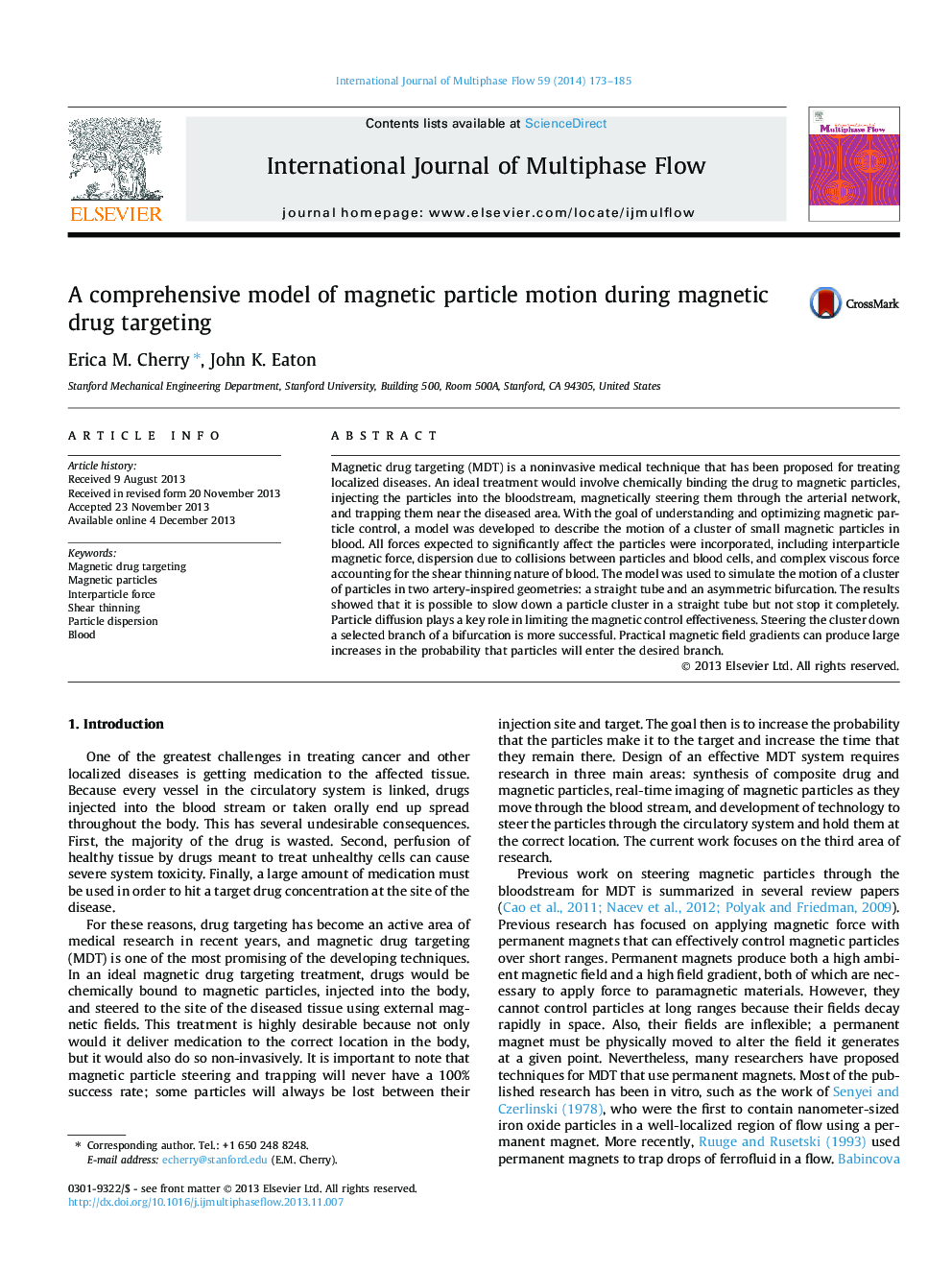| Article ID | Journal | Published Year | Pages | File Type |
|---|---|---|---|---|
| 667294 | International Journal of Multiphase Flow | 2014 | 13 Pages |
Abstract
Magnetic drug targeting (MDT) is a noninvasive medical technique that has been proposed for treating localized diseases. An ideal treatment would involve chemically binding the drug to magnetic particles, injecting the particles into the bloodstream, magnetically steering them through the arterial network, and trapping them near the diseased area. With the goal of understanding and optimizing magnetic particle control, a model was developed to describe the motion of a cluster of small magnetic particles in blood. All forces expected to significantly affect the particles were incorporated, including interparticle magnetic force, dispersion due to collisions between particles and blood cells, and complex viscous force accounting for the shear thinning nature of blood. The model was used to simulate the motion of a cluster of particles in two artery-inspired geometries: a straight tube and an asymmetric bifurcation. The results showed that it is possible to slow down a particle cluster in a straight tube but not stop it completely. Particle diffusion plays a key role in limiting the magnetic control effectiveness. Steering the cluster down a selected branch of a bifurcation is more successful. Practical magnetic field gradients can produce large increases in the probability that particles will enter the desired branch.
Keywords
Related Topics
Physical Sciences and Engineering
Chemical Engineering
Fluid Flow and Transfer Processes
Authors
Erica M. Cherry, John K. Eaton,
